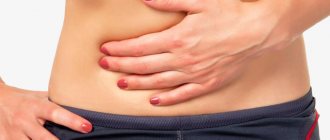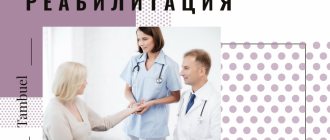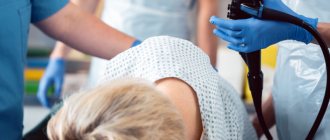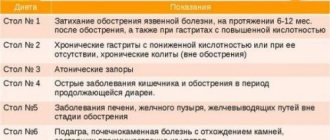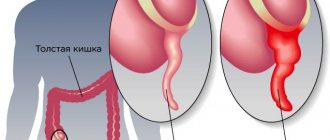The appendectomy operation is considered easy and harmless for the patient and the surgeon. Maybe! But how many cases of peritonitis or late complications occur after a successful intervention? And most often this happens through the fault of the patient. Appendectomy is a wide-ranging intervention on the peritoneal organs. And behavior after surgery also affects the healing process, as does the skill of the surgeon.
The first day after the intervention
Surgery to remove the appendix is considered a non-hazardous procedure.
The rehabilitation period after appendectomy is 2 months. Young patients who led a healthy and active lifestyle before the intervention recover faster. It is more difficult for children and overweight people to recover.
It is important to understand that removal of the appendix is a wide-ranging open intervention and the doctor’s recommendations on behavior in the postoperative period should be taken with full attention!
After the operating room, the patient goes to the surgical ward, and not to the intensive care unit. Intensive care unit after appendectomy is not indicated.
The intervention is carried out under general anesthesia, so in the first hours after the operation it is important to properly remove the patient from this state, prevent disturbances in brain function and prevent vomit from entering the trachea and lungs. What should you do on the first day:
- Lie for the first 8 hours after the intervention and only on your left side. This promotes free passage of vomit and less additional trauma to the patient.
- If the patient's condition is satisfactory, then after 8 hours he is allowed and even prescribed to sit down, make careful movements, stand with the help of a nurse or on his own.
- During this period, the administration of injectable painkillers and antibiotics is prescribed to stop a possible inflammatory process.
The duration of stay in the surgical department is no more than 10 days. If the patient is confidently recovering, then, as a rule, he is transferred to outpatient treatment on the 4th day after the intervention. What medical staff must do:
- monitoring of temperature, blood pressure, condition of sutures;
- monitor the quality and quantity of urination and bowel movements;
- dressings;
- prevention of possible complications.
Complications
Insufficient care, failure to comply with hygiene standards, and medical errors can lead to complications. Problems are observed with suture rejection and allergic reactions. Compaction is possible when, in addition to the scar, additional formations are formed, inflammation, suppuration, and suture dehiscence occur.
Signs of inflammation are redness around the affected area, increased body temperature of the patient. When suppuration occurs, purulent masses appear. Pus can flow from the outer part of the suture, from the inner part with inflammation of the abdominal cavity. The discrepancy occurs during physical activity, an error, it can be partial or complete. Any problematic situation requires immediate intervention from specialists. The recovery period increases, sometimes by months, and medications and additional treatment methods are required.
Nutrition during the postoperative period
Diet after appendectomy is very important.
The second most popular question for a doctor after surgery is what can you eat? The patient will have to follow a diet for 14 days.
On the first day after the intervention, only drinking regimen is indicated. No solid foods. Non-carbonated mineral water or low-fat kefir are allowed.
On the second day you should start eating. This will allow you to quickly restore intestinal motility. Meals are fractional, in small portions - from 5 to 6 times a day. What to bring to the patient for lunch:
- liquid porridge;
- vegetable purees from non-fermentable vegetables;
- fruit purees;
- broths;
- fermented milk products except sour cream;
- pureed meat;
- jelly;
- compotes.
On the fourth day, the diet expands. You can add dried bread, gradually introduce solid foods, herbs, baked apples, meat and fish. Fermented milk products in any form and quantity are indicated to normalize the microflora.
Subsequently, the patient returns to his usual diet. But any changes in diet should be agreed with your doctor.
Drinks allowed include rosehip decoction without restrictions, juices, weak tea, still mineral water and herbal infusions.
Functions of the appendix
According to numerous physiologists, Appendix does not carry any useful functional load. We inherited it from our prehistoric ancestors and in the process of evolution turned into a so-called rudiment. However, some scientists suggest that it (thanks to its lymphatic system) helps the formation of general immunity during the growth period of the body in childhood.
In any case, the suture after appendicitis remains the only reminder that Appendix was originally in our body. Removing this atavism will not entail any additional functional limitations.
What should you exclude from your diet?
After appendix removal, alcohol is strictly prohibited.
You should follow your doctor’s nutritional recommendations not only in the early postoperative period, but also 2 weeks after discharge.
Any products that cause fermentation and irritation of the intestinal walls are strictly prohibited.
This diet is aimed at reducing the risk of rupture of internal sutures and postoperative bleeding during the rehabilitation period. The following foods and drinks are prohibited:
- alcohol in any form. The use of alcohol-containing medications should be discussed with your doctor;
- reduce the amount of salt consumed, do not use seasonings and spices;
- beans, peas, other legumes;
- exclude certain types of vegetables - tomatoes, raw green and onions, cabbage in any form, hot peppers;
- smoked meats and semi-finished products;
- conservation;
- strong coffee;
- carbonated sweet and mineral waters;
- grape juice and wine.
This video will tell you how to eat properly after appendicitis removal:
Diagnostics
First of all, an experienced specialist makes a preliminary diagnosis based on the patient’s complaints, external examination and examination of the abdominal cavity using the fingers (pressure and sharp release in the right iliac region, pushes into the lower part of the large intestine, and so on). Based on the intensification of painful symptoms, the doctor draws conclusions about the presence of appendicitis and the urgency of surgical measures. If time permits, then a blood and urine test is required.
Of the diagnostic tools, the best and most effective method is laparoscopy. Inserting an endoscope (with a camera attached to the end) through a small puncture allows the doctor to obtain the most complete picture of the inflammation. Based on the data obtained, a decision is made on the method of performing the surgical operation.
Additional diagnostic procedures (such as ultrasound, computed tomography or magnetic resonance imaging) may be prescribed to identify concomitant diseases or complications, but do not provide a 100% correct result for making a clear diagnosis of appendicitis.
Water treatments
Surgery, blood, a surge of adrenaline, vomiting and the patient realizes that after the operation he smells unpleasant. But you will have to wait a bit with water procedures.
Until the stitches are removed, bathing and showering are prohibited. It is allowed to wipe the body with water, wash your face, and wash your feet.
After the stitches and bandage are removed, the restrictions are removed, but you should not rush to the bath or sauna. Doctors recommend short-term bathing in the shower.
The suture area should not be rubbed or massaged. It is not advisable to use decoctions of medicinal herbs while bathing, as they dry the skin.
Symptoms and factors for the onset of the disease
Pain syndrome with appendicitis usually manifests itself:
- in the right iliac region;
- first in the stomach area, gradually going down the abdomen and being localized either on the right side or in the center.
For information! Naturally, the manifestation of pain depends largely on how and on which side a person’s appendicitis is located.
Inflammation of the appendix may be accompanied by:
- increased body temperature;
- nausea or vomiting.
The main factors causing appendicitis are:
- blockage of blood vessels or the lumen of the appendix;
- infections that spread throughout the body through the bloodstream;
- adhesions in the pelvic area (primarily this applies to women);
- the so-called unclear or incomprehensible causes of the inflammatory focus.
Features of the female body
Due to the specific physiological structure of the body, the symptoms of appendicitis in women can be offset by painful sensations due to inflammation of the appendages (fallopian tubes or ovaries). Naturally, first of all, representatives of the fair sex turn to a gynecologist. However, after stopping this inflammatory pathology, an adhesive process may develop in the pelvis, affecting the appendix itself. These negative consequences sometimes lead to acute appendicitis. In this case, it is necessary to urgently contact a surgeon and undergo all necessary examinations.
How the seam is tightened
After the surgical procedure, a suture remains inside and outside. The first is done at the site of cutting off the inflamed intestinal fragment. The external one remains on the stomach when the operation is completed. Often, the quality of the internal incisions determines the condition of the abdominal scar after surgery.
There are certain features of sutures after eliminating the inflamed appendix. Based on the visual characteristics of the healing scar, a qualified surgeon will be able to accurately determine the errors made during the procedure and the duration of the recovery process.
A normal-looking scar is characterized by the following visual features:
- After a correctly performed operation, a scar of 7-10 cm remains. If there is fat on the abdomen or there are post-operative difficulties, an elongated scar is formed. In some examples, its size is 25 cm.
- The scar is located slightly above the pubis on the right side. The cut line is often horizontal, with a slight slope.
- The wound heals from several months to a year. During this period, epithelium forms on damaged tissue fragments. Initially, the scar forms a red-purple hue, and after some time it begins to fade.
- The quality of the seam will become worse if the inflammatory process begins or errors were made when applying internal sutures.
- The appearance of the scar changes if the patient does not follow the surgeon's recommendations after surgery.
The scar looks distinct for the first couple of weeks, it is characterized by hardness and relatively high density. This happens in most cases because connective tissue is always formed during the scarring process.
Seam processing
Until the external sutures are removed, the patient remains in the hospital. During this period, the scar is treated to prevent infection, and medical specialists constantly monitor the condition.
Outside the hospital, the scar is treated with iodine or potassium permanganate. Ointments and gels are used to speed up the healing process; a product with sea buckthorn extract is recommended.



